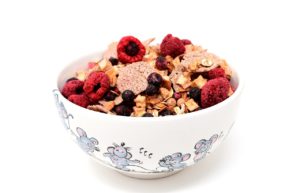Net carbs are the carbohydrates that can be digested and processed by the body as dietary carbohydrate. Therefore, they directly impact blood sugar. You can determine how many net carbs you are eating by subtracting the grams of fibre, glycerine, and sugar alcohols from the total grams of carbohydrate. Net carbs are the only carbs that you need to count when you are on low-carb diets, such as the Atkins diet.
It is important to understand why fibre does not count as a regular carbohydrate. Fibre substance does not break down into sugar, so it does not play a part in the overall sugar load of the carbohydrate. If a slice of bread has 27 total carbohydrate grams and 3 grams of fibre you have a net carbohydrate content of 24 grams (27 g – 3 grams = 24 grams). This explains why some high fibre foods will have a more favourable impact on the blood sugar and insulin levels.
Only plant foods contain dietary fibre. Fibre has a number of effects on digestion, some beneficial, and some more harmful. One positive effect is that fibre is likely to decelerate the rate of digestion of food. This leads to a more gradual emptying of the food from the stomach into the small intestine. This means that there is less possibility of large quantities of glucose being absorbed quickly from the small intestine into the blood, and therefore a lower chance of an insulin surge. Insulin is the hormone that is released when glucose is absorbed from the small intestine. It is possible that by slowing stomach emptying, fibre helps avoid the situation where the body has to produce large quantities of insulin, as a result of repeated rapid release of glucose into the intestine. In turn this may help protect against diabetes in susceptible people.
However, fibre does get in the way with the absorption of some nutrients. For example, up to 5% of the fat in a moderately high fibre diet is not absorbed because of this interference. This may even be a good thing in Australia, given that 63% of men and 47% of women were overweight in 1995, with no sign that these levels of overweight and obesity will decrease. High fibre foods also interfere to some extent with the absorption of some essential minerals and trace elements, but a high fibre diet is also probable to provide you with extra minerals and trace elements, so the effect is not believed to be very significant for normal Western diets.
Despite these minor detrimental effects, a high fibre intake is understood to be considerably advantageous on the whole. Low intake of fibre, particularly of the insoluble forms of fibre such as those in bread and other wheat products, is one of the major causes of constipation. Low fibre intakes are also strongly associated with an increased risk of diverticulitis. Although the evidence is less compelling, lack of fibre in the diet may also contribute to the incidence of rectal cancer, haemorrhoids, obesity, appendicitis and ulcerative colitis. High intake of soluble fibres such as the pectin and gums, found in fruits, vegetables, rolled oats, and saponins, found in legumes, is associated with reduced blood cholesterol. High intake of foods of plant origin, all of which contain some fibre, is linked with a reduced threat of heart disease, cancer, and an improved life expectancy.
Another benefit, and one that may help with weight control, is the sensation of satiety, that is, a feeling of fullness, which follows a meal plentiful in fibre. It is also true that high fibre foods are almost always low in fat, so a high-fibre diet will usually be a low-fat diet.






